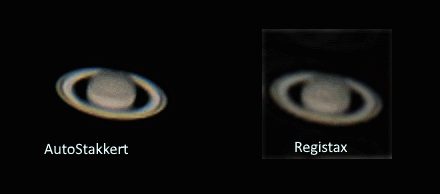
- #PROCESSING MOON IN REGISTAX 6 TUTORIAL HOW TO#
- #PROCESSING MOON IN REGISTAX 6 TUTORIAL UPDATE#
- #PROCESSING MOON IN REGISTAX 6 TUTORIAL FULL#
- #PROCESSING MOON IN REGISTAX 6 TUTORIAL ISO#
If you’re like I was then this video will give you a head start. Finally I decided to put in the hours to see what all the controls do and then I was able to again start getting better and better images. Before that I found something that worked and stopped playing. In the video I show you things I learned by playing around for many hours. The RegiStax web site has some useful tips to get you started. RegiStax does not come with a user manual. Some people will use other tools such as PhotoShop or AstraImage for further processing. It seems that everyone uses them and for many people that is all they need. The wavelet tools in RegiStax are very popular. I’m continually learning better ways and I am certain I will improve with more practice. This is not intended to cover all the features of Registax, but it should be a good starting point to help get you underway with processing your. Of all the things to learn about planetary imaging sharpening is the possibly the hardest thing to get right. Here's my attempt to document the steps I normally use to process planetary images in Registax.
#PROCESSING MOON IN REGISTAX 6 TUTORIAL HOW TO#
I show how to use RGB Align, Gamma, and color saturation. In the video I also point out several quirks of RegiStax. We apply wavelets while looking at the image on the screen and asking ourselves “How’s that?” I figure I might as well be seeing the proper colors while doing that. I do this first because wavelet sharpening is highly subjective. I use these to set the color and brightness before doing the wavelet sharpening using the controls on the left side of the wavelet tab. Once you have the camera’s settings dialed in, start shooting. Take a few test shots and make sure you have a well-exposed moon without any parts being overexposed.
#PROCESSING MOON IN REGISTAX 6 TUTORIAL ISO#
In this video I show how to use the Histogram and RGB Balance functions located on the right side of the wavelet tab. A good place to start is around ISO 100, f/8 and 1/200th of a second. Something I found very helpful is this by Christophe Pellier.įinalize image processing with RegiStax 6. RegiStax has several useful tools for sharpening. It was too many align points and the movement of the target in the images was to great for Registax to cope with but he found out that if you manually select a few defined alignment points and also select Align by CofG it work out OK and produce a decent image.If you open the stacked image with RegiStax 6 you will find yourself on the wavelet tab. I contacted Cor asking if this was me doing something wrong or not.Ĭor tried the images I sent to him and it took several goes for him to work out what was going wrong. I tried resizing the images to 1024圆83px and ran it through Registax and these worked out fine as when it came to auto selecting alignment points it only came up with 179 due to the smaller image size. If I even went to stacking of just 2 images then the same happened.


Putting these into Registax V6.1.0.8 and clicking "Set Alignpoints" to auto select the points produced 1799 points and then going to Stack produce the ghosting of the images. After updating and installing the software, we can open up the image created in Autostakkert by simply dragging and dropping the image into the main window of Registax.
#PROCESSING MOON IN REGISTAX 6 TUTORIAL UPDATE#
Now the moon in these shots slowly moves from top right of the frame to the bottom left of the frame (my tracking motor on my EQ Platform not that accurate over 10mins). Note that you should download Registax 6.1 first before you can download and update Registax to its latest version, v6.1.08. I was trying to stack 100 moon shots from a EOS350D at full-resolution 3456x2304 This technique works by linking all of the layers together. Linked wavelets can be good for images of the Moon that require fine detail.
#PROCESSING MOON IN REGISTAX 6 TUTORIAL FULL#
In the meantime I recommend reading this excellent tutorial on full disc lunar imaging which covers the process from capturing the images to getting results out of RegiStax 6. Over adjustment may start to make your image look blurred so gentle adjustments are needed. I plan to do an update to this example when I get time and include my processing steps with RegiStax 6 too. To much movement between the frames of the target In Layer 1, click the up arrow in the Denoise box so it shows 0.05. I know this is an old thread but I have been having this problem and I have contacted Cor who helped me.


 0 kommentar(er)
0 kommentar(er)
